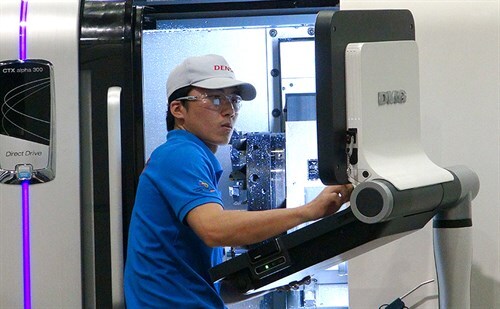DENSO harnesses the power of the IoT in worldwide factories
A historical pursuit of high standards
With 130 factories in 38 countries, consistency and quality control are logically a top concern for a large organisation such as DENSO.
In the 1980s and 1990s, DENSO relied on a self-described UTOPIA, or Useful Total Organized Plant Integrated systems for Action, method in order to achieve its ideal mix of automation, information technology and human expertise in running its factories.
However, in order to reduce product defects and increase product consistency, DENSO switched to the efficient Fast Action system, or eFA, in 2001. This new DENSO original process quality management system applied advanced analytical functions to determine production patterns that led to inconsistent product quality. By altering or eliminating these erroneous methods, DENSO was able to increase overall product quality control and consistency.

Going further with the IoT
Now, DENSO is once again emerging as a leader in factory management through its incorporation of IoT processes. With R&D sites located in Japan, California, and Germany and through joint research at the University of Cincinnati, DENSO hopes to have all of their 130 worldwide factories connected via the IoT by 2020, seamlessly communicating as if they were all housed under the same roof.
To make this transition to interconnected factories a reality, DENSO relies on sensors, artificial intelligence (AI), human interface device (HID) and most importantly, the communication of knowledge between these pilot factories.
Sensors are the starting point of the IoT. Developed using the same technology as DENSO’s in-vehicle sensors, they capture constantly changing data relating to each category of the 5M1E: man, machine, material, method, measurement and environment. The data captured by these sensors is then organised and analysed by artificial intelligence using tools such as predictive analysis and machine learning to draw deeper conclusions from the collected data.

Moving beyond the machines
The process, however, does not stop with the machine. Employees also participate in the data sharing process to permit human creativity and wisdom in response to more unconventional problems or ones machines fail to anticipate. This resulting human knowledge is then fed back to the AI to promote the evolution of an algorithm which will allow for continuous growth of both humans and machines, and ultimately, improve factory protocols.
The key to implementing the IoT successfully lies in the interfacing between machine and human. Currently, DENSO is investigating optimal solutions for real-time data sharing between these two components by trialling the use of advanced technology, including augmented reality (AR), wearable devices and business intelligence (BI) tools. The use of these technologies should enable employees to reach creative, innovative solutions on the plant floor and enhance the strength of the symbiosis between human and machine.
The end goal is to gather and share this product data with all DENSO factory locations to determine the best practices to implement worldwide — and in real time.




















































